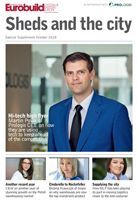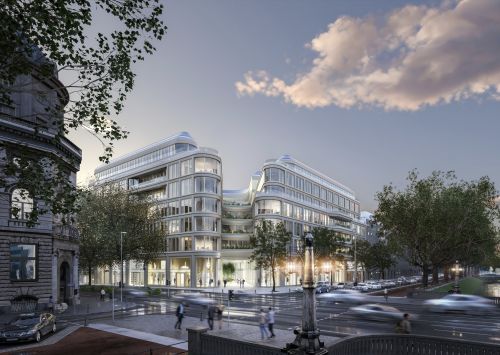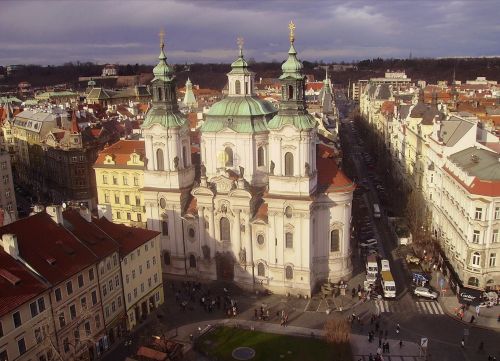Eco-chambers of e-commerce
Trends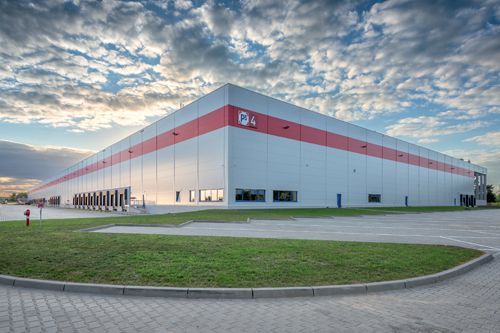
In 2017, P3 became one of the first specialist warehouse developers in the world to sign up as an active participant to the United Nations Global Compact, the world’s largest corporate sustainability initiative. A year later, P3 also became a member of GRESB, a benchmark global environmental, social and governance (ESG) programme for real estate companies. “These two initiatives allow us to assess P3’s sustainability performance, measure its achievements against its peers and learn about new sustainability practices, so that we can maintain our position among the leaders in our sector when it comes to developing and managing sustainable warehouses. In addition to all that, P3’s in-house sustainable solutions team is committed to ensuring that the next generation of our warehouses are built to the highest standards, meeting and exceeding the strictest European environmental impact criteria, while also generating real operational savings,” claims Steffen Walvius, P3 Logistic Parks’ sustainability manager.
What kind of measures does P3 take when designing and delivering sustainable buildings? The company has a scientific approach, which includes, for example, undertaking site-specific computer simulations throughout the design process to minimise energy use. It also involves life-cycle assessments to obtain a better understanding of the environmental impacts of building materials and final energy use, including direct emissions, embodied energy, mineral depletion and water depletion, among others. P3 uses also the rating system developed by Danish professor Povl Ole Fanger to ensure the maximum thermal comfort for each of the occupants of each room while minimising the energy needed to achieve this.
From Poland to Spain
Another example of P3’s approach to sustainable development is its 46,000 sqm BTS warehouse developed for IDL at P3 Mszczonów park, not far from Warsaw. In this case savings from pro-environmental features were also an important design requirement for the client. “Each kWh of electricity used in Poland emits twice as much CO2 as the EU average. It is therefore very important for the environment to reduce electricity consumption,” explains Steffen Walvius. The developer has therefore introduced a number of energy saving measures, including LED lighting, air-tight PIR cladding (which reduces uncontrolled air infiltration), as well as solar water heating and water saving systems. This approach has resulted in reducing the park’s CO2 emissions by 1,806 tonnes as well as providing estimated savings of EUR 154,000. In another of the developer’s parks, situated outside Madrid, a solar panel car park canopy has been installed. The canopy generates 100 pct renewable energy that supplies the power for emission-free electrical vehicle charging points.
Brownfields for green development
Brownfield development is another important plank of P3’s environmental strategy. The company aims wherever possible to take on re-development opportunities in strategic locations across Europe, rather than building on previously undeveloped land. “P3 has successfully carried out several of these challenging and often complex projects in Germany and France, occasionally while one or more clients have continued to operate uninterrupted on the site,” says Bartłomiej Hofman, managing director P3 Logistic Parks in Poland. He also adds that perhaps the ideal form of brownfield development is urban logistics. “In the retail and e-commerce sectors, occupiers are increasingly requiring warehouse space close to city centres to allow for the speedy distribution of products to the end user – private individuals or businesses. Again, driven by the needs of our clients, P3 has established an urban logistics subsidiary dedicated to delivering European last mile warehousing,” reveals Bartłomiej Hofman. The first sites have already been identified in Germany and now the company has a 3–5 year plan to develop at least 60 urban logistics centres across Europe. The team is looking at both primary and secondary locations close to the hearts of key population centres and typically involving the refurbishment of standing buildings or the redevelopment of brownfield sites. In order to mitigate the impact that such a use could have on local residents, P3 is working closely with logistics service providers to introduce noise and light reduction measures – including rubber cages, carpeted docks and the use of the latest generation of electric vehicles. “P3 believes that by working closely with both clients and local authorities it can help to fulfil the present requirement for prompt, eco-friendly delivery, while also reducing congestion in cities,” adds Bartłomiej Hofman. ν
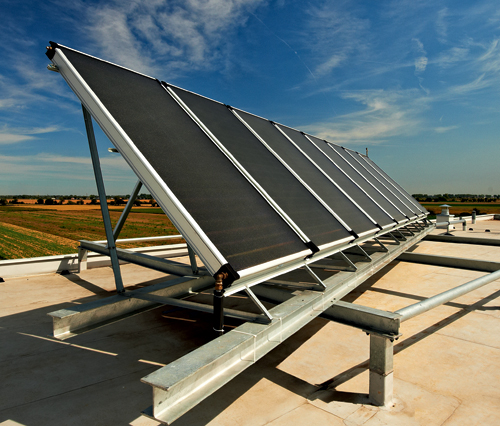
A set of solar panels at P3 Poznań park
The changing logistics landscape
P3 annually holds its ‘P3 Momentum Conference’, the aim of which is to educate its own team and its clients about the cutting edge tech and trends that have been revolutionising the logistics sector. This year’s event is to be held in Prague in October and will include business transformation expert Sean Culey, as well as DHL’s vice-president and head of retail consumer and e-commerce for the MLEMEA region Alex Hislop, as well as Alessandro De Luca, the CIO of Merck Healthcare responsible for the end-to-end supply chain for Merck Biopharma, the group’s pharmaceutical division. “P3 is committed to understanding the way in which the increasing use of automation, AI and other technology is transforming its customers’ businesses and, as a consequence, their property requirements,” adds Julie Svárovská, the Europe business development manager of P3 Logistic Parks.

























